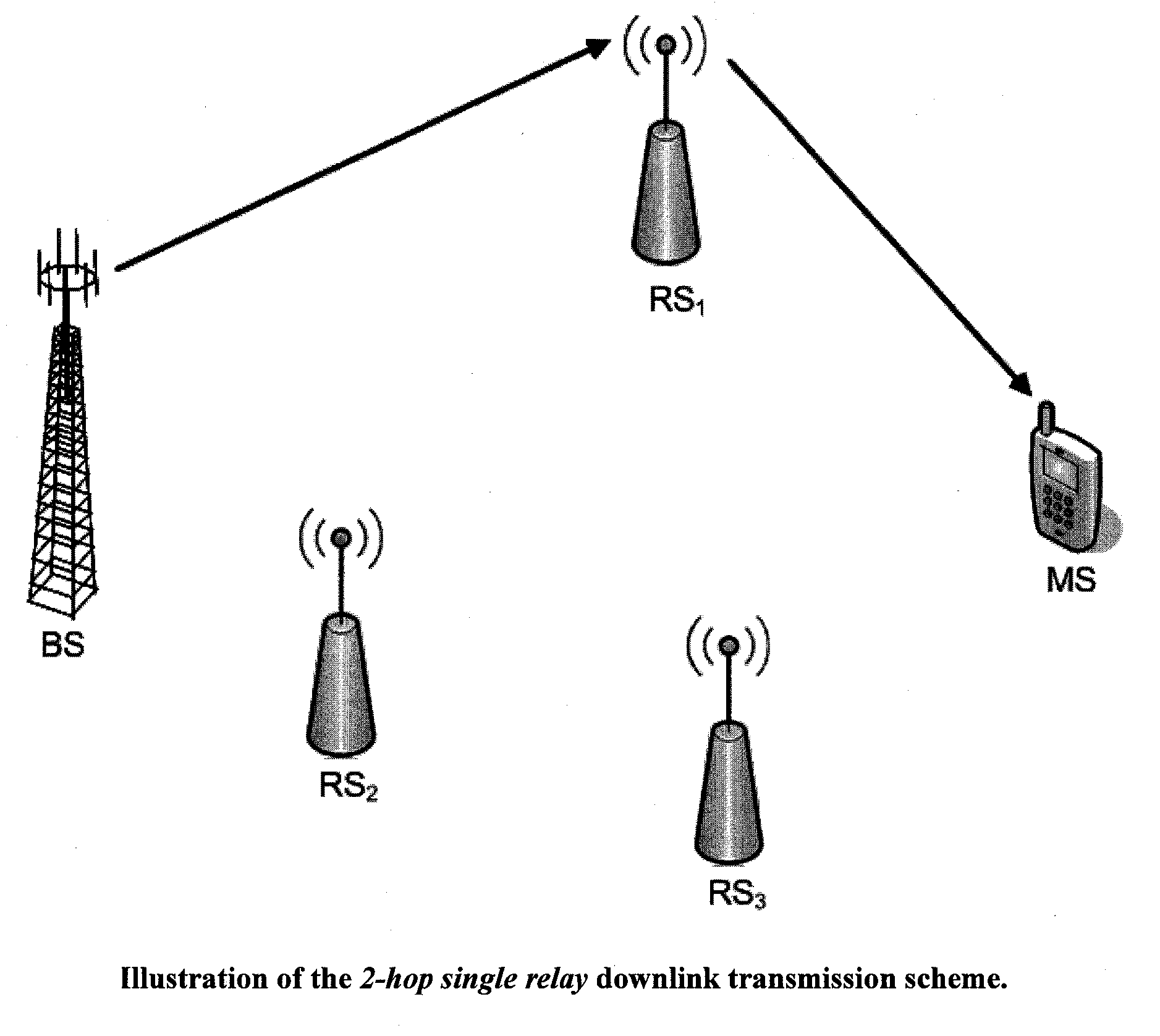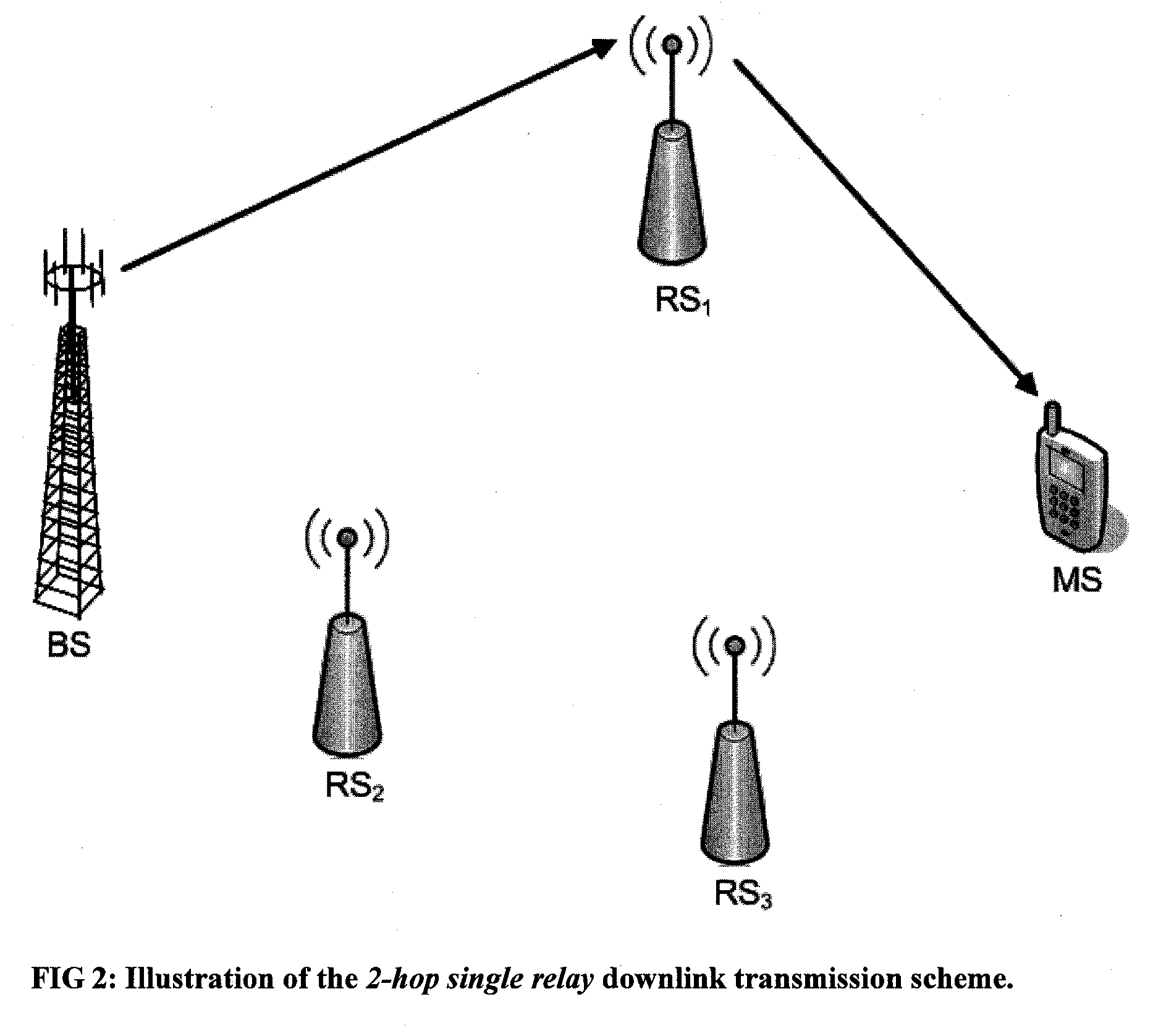Method and system for opportunistic hybrid relay selection scheme for downlink transmission
- Summary
- Abstract
- Description
- Claims
- Application Information
AI Technical Summary
Benefits of technology
Problems solved by technology
Method used
Image
Examples
Embodiment Construction
[0038]FIG. 1 illustrates a conventional direct downlink transmission scheme in a cellular network, in which a BS transmits a signal to an MS within the coverage area of the BS. Often, however, such a MS may be located in a coverage hole, or may be outside of the coverage area of the BS. If the MS is in a coverage hole or outside of the coverage area of the BS, one or more RSs may be used to carry out the desired transmission. FIG. 2 illustrates a simple 2-hop single relay downlink transmission scheme, using a single RS. FIG. 3 illustrates a multi-hop single relay downlink transmission scheme, using two or more RSs. These indirect transmission schemes are low-cost candidates that can provide the benefits of capacity enhancement and coverage extension.
[0039]FIG. 4 illustrates a cooperative relay downlink transmission scheme, in which the desired transmission arrives at the MS over both direct and indirect transmission paths. Cooperative relay, also referred to as cooperative communica...
PUM
 Login to View More
Login to View More Abstract
Description
Claims
Application Information
 Login to View More
Login to View More - R&D
- Intellectual Property
- Life Sciences
- Materials
- Tech Scout
- Unparalleled Data Quality
- Higher Quality Content
- 60% Fewer Hallucinations
Browse by: Latest US Patents, China's latest patents, Technical Efficacy Thesaurus, Application Domain, Technology Topic, Popular Technical Reports.
© 2025 PatSnap. All rights reserved.Legal|Privacy policy|Modern Slavery Act Transparency Statement|Sitemap|About US| Contact US: help@patsnap.com



